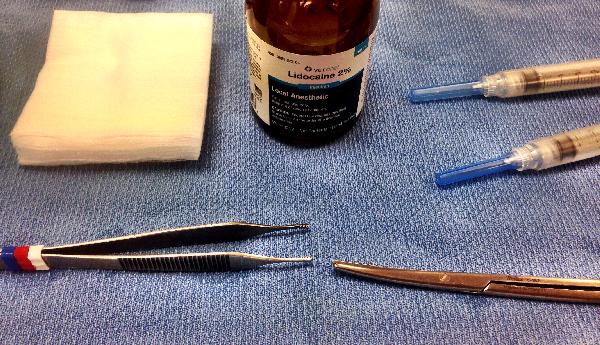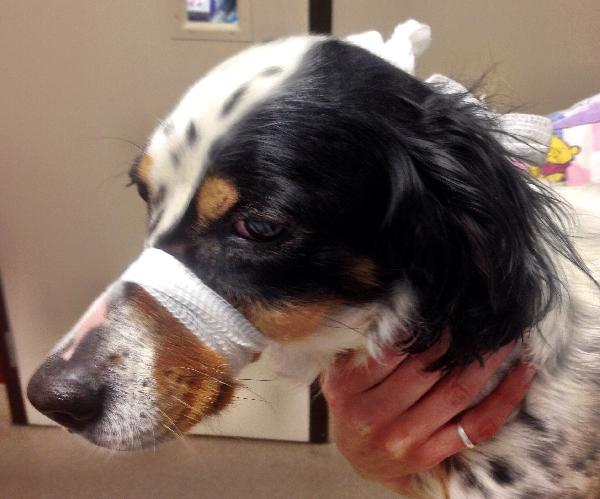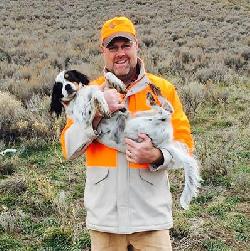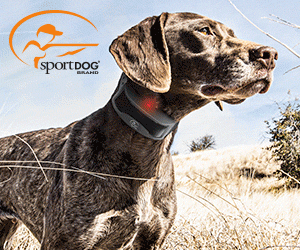Skin Laceration Repair in the Field by Shawn Wayment DVM
Posted 12/09/2019
There is nothing finer than being afield in autumn's country with bird dogs. The whir of wings as a covey of scaled quail erupts from the sand sage can stir the cholesterol from the morning's greasy-spoon-country-dinner breakfast. Gun smoke clears the air as the setter climbs through the taut five-stranded barbed wire fence retrieving the first bird of the day. This is the Wild West, and ranchers want assurance that their livestock are protected. As you reach down to take the bird your well trained setter delivers gently to hand, you notice fresh blood on the dorsal surface of her back. A nimrod's classic morning has now turned into a trip to the local vet ... which in this case is 150 nautical miles from where the event occurred and it is Sunday.
Upon closer inspection of the laceration, you notice it's a superficial slash in the skin and not into the deeper muscle layers. Superficial lacerations of the skin can be stapled with a little bit of veterinary knowhow and the proper supplies. Deeper lacerations into the muscle must be closed in several layers with sutures and attempts to staple will lead to a seroma (fluid trapped beneath the skin from blood and inflammation) forming and ultimately a wound that will not properly heal. A word of caution, always assess the situation of your hunting partner and use your better judgment while you're in the field. Don't let a little veterinary knowhow lead to something disastrous for your bird dog.
The following below are the steps to properly staple a skin laceration in the field. It's a very good idea to establish your bird dog(s) with a local veterinarian that truly understands hunting dogs and their perils. Furthermore, I would recommend attending a seminar or first aid course to get better educated in field emergencies and learn how to suture a wound.
(1) Calm your bird dog and apply a gauze muzzle. Muzzles protect you from getting injured and can help calm an excited dog.
(2) Clip the hair around the edges of the wound. Clippers (battery operated work great) or scissors can be used. Reassess the laceration and make sure it is only through the skin and not into the deeper muscular layers.
(3) Flush or irrigate the wound repeatedly with diluted betadine solution (mix tap water and betadine solution to the consistency or color of weak iced tea) from a 12 cc or 20 cc syringe. The pressure from the syringed betadine/H2O solution will aid in dirt and bacterial removal.

(4) 2% Lidocaine or 0.25 to 0.5% Marcaine (local anesthetic) can be used to irrigate the wound to topically anesthetize the tissue and can be injected around the laceration margins. This is where a field first aid course and a bird dog vet will come in handy. Wait 5 to 10 minutes before you proceed from here.
(5) Trim any necrotic or dead looking skin along the edges of the laceration with scissors. This will make the margins fresh and also the wound will bleed again. Bleeding brings good factors that will aid in killing bacteria and help in healing.

(6) Appose the edges of the laceration with the staple gun. Staples should be placed about 3 to 4 mm apart from each other. It doesn't matter with end you start at.
(7) Place Neosporin or Silvadene cream over the staples. Wrap the area (not too tight) if they can lick or traumatize the staples.
(8) Staples typically need to be removed in 14 days. Watch for swelling, redness, heat or pain associated with the area. If any of these are noted, seek veterinary attention. I typically place my patients on an antibiotic like Simplicef or Cephalexin for 7 days.
Upon closer inspection of the laceration, you notice it's a superficial slash in the skin and not into the deeper muscle layers. Superficial lacerations of the skin can be stapled with a little bit of veterinary knowhow and the proper supplies. Deeper lacerations into the muscle must be closed in several layers with sutures and attempts to staple will lead to a seroma (fluid trapped beneath the skin from blood and inflammation) forming and ultimately a wound that will not properly heal. A word of caution, always assess the situation of your hunting partner and use your better judgment while you're in the field. Don't let a little veterinary knowhow lead to something disastrous for your bird dog.
The following below are the steps to properly staple a skin laceration in the field. It's a very good idea to establish your bird dog(s) with a local veterinarian that truly understands hunting dogs and their perils. Furthermore, I would recommend attending a seminar or first aid course to get better educated in field emergencies and learn how to suture a wound.
(1) Calm your bird dog and apply a gauze muzzle. Muzzles protect you from getting injured and can help calm an excited dog.
(2) Clip the hair around the edges of the wound. Clippers (battery operated work great) or scissors can be used. Reassess the laceration and make sure it is only through the skin and not into the deeper muscular layers.
(3) Flush or irrigate the wound repeatedly with diluted betadine solution (mix tap water and betadine solution to the consistency or color of weak iced tea) from a 12 cc or 20 cc syringe. The pressure from the syringed betadine/H2O solution will aid in dirt and bacterial removal.

(4) 2% Lidocaine or 0.25 to 0.5% Marcaine (local anesthetic) can be used to irrigate the wound to topically anesthetize the tissue and can be injected around the laceration margins. This is where a field first aid course and a bird dog vet will come in handy. Wait 5 to 10 minutes before you proceed from here.
(5) Trim any necrotic or dead looking skin along the edges of the laceration with scissors. This will make the margins fresh and also the wound will bleed again. Bleeding brings good factors that will aid in killing bacteria and help in healing.

(6) Appose the edges of the laceration with the staple gun. Staples should be placed about 3 to 4 mm apart from each other. It doesn't matter with end you start at.
(7) Place Neosporin or Silvadene cream over the staples. Wrap the area (not too tight) if they can lick or traumatize the staples.
(8) Staples typically need to be removed in 14 days. Watch for swelling, redness, heat or pain associated with the area. If any of these are noted, seek veterinary attention. I typically place my patients on an antibiotic like Simplicef or Cephalexin for 7 days.


















